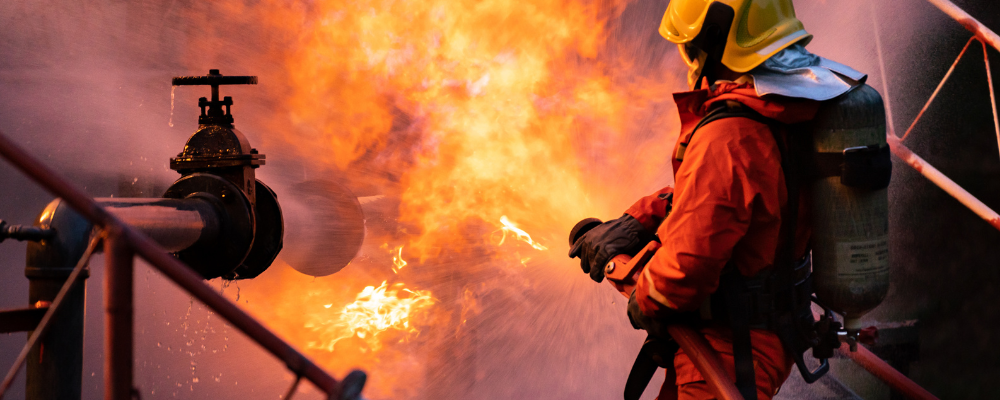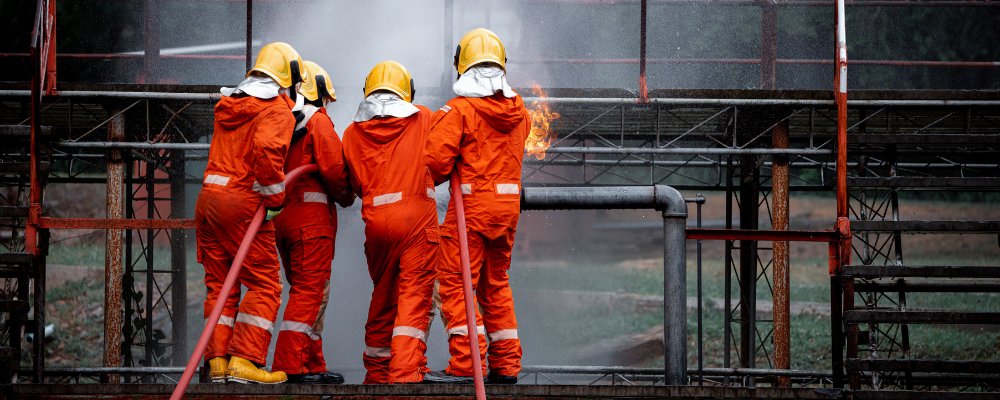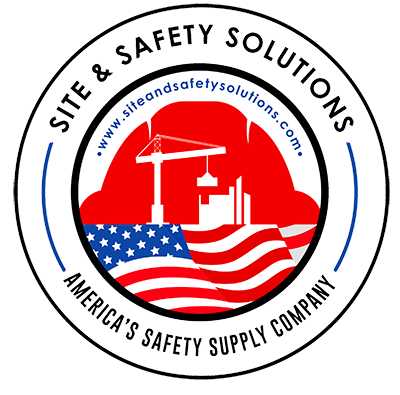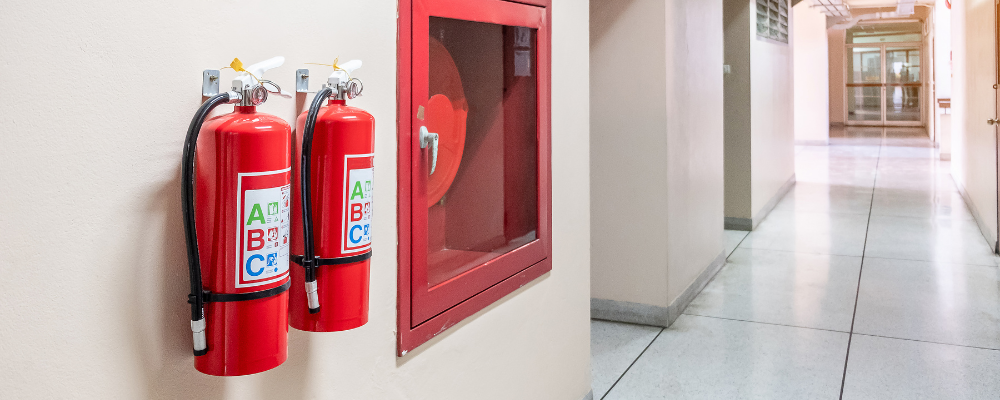
Introduction:
Construction sites are dynamic environments that require vigilant attention to safety, and among the numerous safety concerns, fire safety is paramount. This blog explores the critical aspects of fire safety explicitly tailored for construction workers.
Introduction to Fire Safety in Construction
Construction fire safety involves a multifaceted approach to prevent, detect, and effectively manage fires. It encompasses a wide array of tools, equipment, and practices that are indispensable for maintaining the safety and integrity of construction sites.
A Closer Look at Essential Fire Safety Products
Badger™ Extra High-Flow 10 lb ABC Fire Extinguisher w/ Wall Hook
The Badger™ Extra High-Flow 10 lb ABC Fire Extinguisher with Wall Hook is a formidable asset in your fire safety toolkit. Its exceptional high-flow capacity enables it to combat various fire types, including fires involving ordinary combustibles, flammable liquids, and electrical equipment.
FireTech™ Canned Smoke
FireTech™ Canned Smoke plays a pivotal role in fire safety testing and training. This product generates non-toxic smoke to simulate natural fire conditions, enabling construction workers to hone their emergency response skills.
Smoke Detector Tester
The functionality of smoke detectors cannot be underestimated. The Smoke Detector Tester offers a quick and reliable means of ensuring the correct operation of smoke alarms at construction sites, enhancing early fire detection.
Kidde 2.75 lb BC Automotive Extinguisher FC10
The Kidde 2.75 lb BC Automotive Extinguisher FC10, designed specifically for automotive applications, provides a compact and efficient solution for construction workers dealing with vehicles and equipment on-site. Its readiness is vital in the event of fire-related emergencies.
Implementing Best Practices for Fire Safety
Fire safety on construction sites extends far beyond having the appropriate firefighting equipment. It hinges on the comprehensive understanding and meticulous implementation of best practices that are fundamental for the safety of construction workers. This section delves deeper into the critical components of these best practices:
1. Fire Prevention:
Construction workers must be proactive in preventing fires before they even start. This entails recognizing potential fire hazards, such as exposed electrical wiring, flammable materials, or faulty equipment. Regular inspections and hazard assessments should be routine, ensuring that all risks are identified and mitigated.
2. Emergency Evacuation Plans:
Preparedness for fire emergencies is non-negotiable. Construction sites should have well-defined and rehearsed emergency evacuation plans in place. Workers need to know the location of fire exit assembly points and how to use them effectively during a fire evacuation. Regular drills and training sessions ensure everyone knows how to react swiftly and safely in a crisis.
3. Proper Utilization of Fire Safety Equipment:
Possessing the right fire safety equipment is useless if it is not used correctly. Workers should be thoroughly trained in operating firefighting equipment, such as fire extinguishers. They must know how to assess the type of fire and select the appropriate extinguisher, as using the wrong one can exacerbate the situation. Regular equipment inspections to ensure they are in good working order are also crucial to this best practice.
4. Fire Risk Assessment:
Continuous assessment of fire risks is key to preventing potential incidents. This involves evaluating construction processes, materials, and the work environment. Any site layout changes or materials should prompt a reassessment of fire risks. By promptly identifying and addressing these risks, construction workers can significantly reduce the likelihood of fire incidents.
5. Fire Safety Training:
Fire safety is not a one-time consideration. Ongoing training and education are essential for construction workers to stay updated on best practices and maintain a high level of awareness regarding fire safety. This training should be a mandatory and recurring aspect of a construction worker’s professional development.
6. Communication and Reporting:
Effective communication plays a vital role in fire safety. Workers should be encouraged to report fire hazards or unsafe conditions promptly. This culture of open communication ensures that issues are addressed before they escalate into safety risks.
In summary, implementing best practices for fire safety on construction sites is not an option but an absolute necessity. Beyond having firefighting equipment on hand, construction workers must embrace a proactive approach to fire prevention, have well-established emergency evacuation plans, use equipment correctly, continuously assess and manage fire risks, participate in ongoing training, and foster a culture of open communication. By adhering to these best practices, construction sites can significantly enhance their safety protocols and protect the well-being of workers while safeguarding valuable assets.

The Vital Role of Ongoing Fire Safety Training
In the dynamic and often hazardous world of construction, where the risk of fire emergencies looms enormous, ongoing fire safety training stands out as an indispensable linchpin in ensuring the safety of construction workers and the security of the construction site itself. This training is an ever-evolving process designed to equip workers with the knowledge, skills, and mindset necessary to respond effectively to fire emergencies. It goes beyond theoretical understanding and involves the practical application of fire safety measures. Here, we delve into the critical role of ongoing fire safety training in the construction industry.
1. Mastering the Operation of Fire Extinguishers:
A fundamental component of fire safety training is the mastery of fire extinguishers. These essential devices are often the first line of defense against small fires. Workers are taught not only how to identify and select the appropriate type of fire extinguisher for different fire classes (e.g., Class A, B, C) but also how to operate them effectively.
- Understanding fire extinguisher types: Training ensures that construction workers are well-versed in distinguishing between various fire extinguisher types, such as water, foam, CO2, and dry chemicals. This knowledge is crucial in choosing the correct extinguisher for the specific fire type.
- Proper handling and usage: Construction workers learn the correct techniques for handling fire extinguishers, including how to hold and aim them, as well as how to use the P.A.S.S. (Pull, Aim, Squeeze, Sweep) technique effectively.
2. Identifying Fire Hazards:
Prevention is a significant aspect of fire safety training. Construction workers are educated on identifying potential fire hazards on the construction site. This knowledge empowers them to take proactive measures to reduce the risk of fire incidents.
- Hazard recognition: Workers are trained to recognize common fire hazards, such as faulty electrical wiring, flammable materials, open flames, and improperly stored chemicals. They are also taught to be vigilant in spotting less obvious risks, such as overheated equipment or machinery.
- Risk assessment: Beyond recognizing hazards, fire safety training emphasizes assessing these risks’ severity and potential consequences. Workers learn to prioritize and address high-risk areas promptly.
3. Executing Emergency Evacuation Protocols:
In a fire emergency, responding swiftly and effectively is paramount. Fire safety training includes detailed guidance on emergency evacuation protocols, ensuring workers know how to act under duress.
- Evacuation plans: Workers are familiarized with the construction site’s evacuation plans, which include the location of emergency exits, assembly points, and routes to safety. This knowledge helps ensure a coordinated and orderly evacuation during an emergency.
- Communication and accountability: Training emphasizes the importance of effective communication during an evacuation. Workers are taught to sound alarms, alert colleagues, and account for all personnel to prevent anyone from being left behind.
4. Continual Updates and Refresher Courses:
Fire safety training is not a one-time event. It evolves to keep pace with changing circumstances and regulations. Ongoing refresher courses are essential to reinforce knowledge and update workers on the latest fire safety equipment and procedures.
Ongoing fire safety training is the cornerstone of fire prevention and response on construction sites. It equips construction workers with the knowledge and skills to master fire extinguishers, identify hazards, and execute emergency evacuation protocols. By continually updating and enhancing this training, construction sites can maintain a vigilant and well-prepared workforce, reducing the risks associated with fire emergencies and ensuring the safety of personnel and valuable assets.
For more information, visit our website and Facebook page.
For more products, visit our website :
Badger™ Extra High-Flow 10 lb ABC Fire Extinguisher w/ Wall Hook
Kidde 2.75 lb BC Automotive Extinguisher FC10
Conclusion
In summation, fire safety is an indispensable facet of construction site security. By integrating top-tier fire safety products like the Badger™ Extra High-Flow Fire Extinguisher, FireTech™ Canned Smoke, Smoke Detector Tester, and Kidde Automotive Extinguisher, alongside meticulous training and adherence to best practices, construction workers can significantly mitigate the risks associated with fire incidents. Prioritizing fire safety is an investment in safeguarding the workforce and preserving valuable construction assets.
Embarking on a journey toward a safer construction site begins with a comprehensive understanding of fire safety and the requisite equipment to mitigate risks. Embracing a safety-centric culture is crucial and instrumental in ensuring the well-being of construction workers and safeguarding construction site assets.










